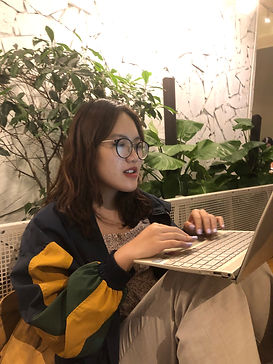
HALF-COURSE REFLECTION
This reflection is a summarization of my self-evaluation during my ICP journey in the past 7 weeks, including my individual opportunities, drawbacks when working as a team and what have I learnt from those experiences to develop myself and enhance my communication skills within a team environment.
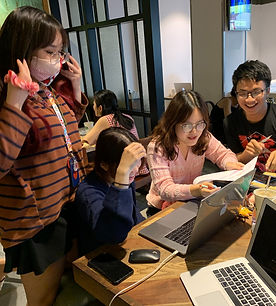
1. The difference in team’s learning styles and personalities
The most important thing I realised is that every person has their own learning styles, thus affecting how people receive and process information. After finishing the Online Profile assignment, we decided to share our learning styles from the tests. By identifying the similarities and respecting the differences, I can maintain an effective team outcome when working together.
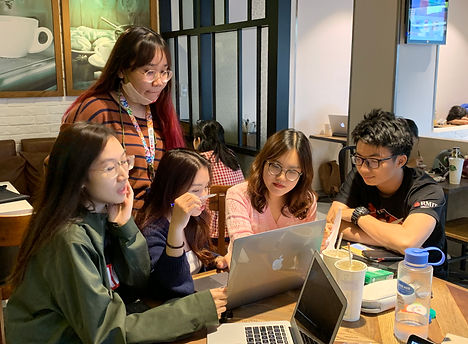
Figure 1: We discussed our learning styles. Interestingly, me, Quynh Anh, Tran, My all received Visual learners while Tri will process information through action, a Kinesthetic person.
To know each member's abilities, we have listed the skills relevant to our project in the skill audit spreadsheet. Therefore, instead of concentrating on general team skills, identifying the specific team members' skills are important for effective teamwork (Marks, Mathieu & Zaccaro 2001). So, a significant benefit of accepting our background diversity is that I can appreciate these differences in our team, thus, achieving mutual understanding when working together.
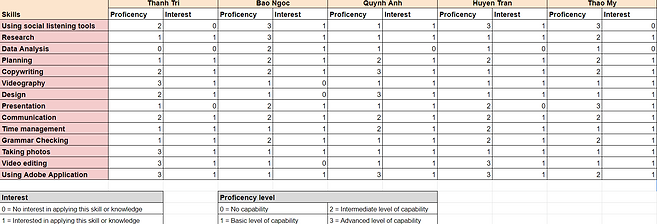
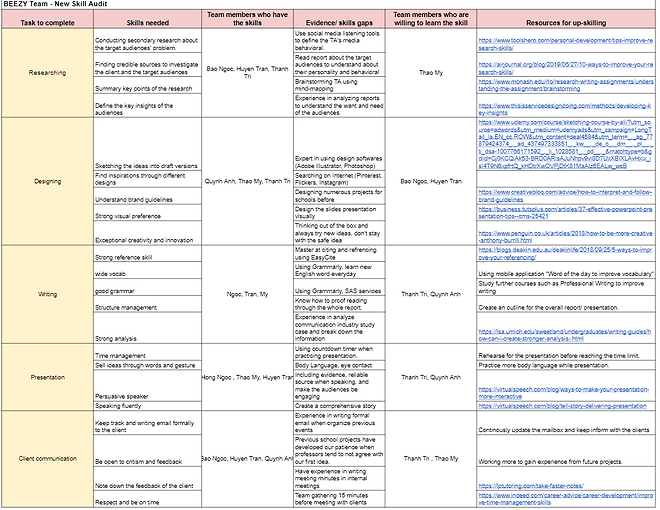
Figure 2: Our team skill audit as we rate based on their capabilities and willingness to learn more about a skill included in our project.
2. COMMUNICATION WITHIN MY TEAM
Communication builds a team dynamic and facilitates the team to be more successful. In terms of online communication, we created a Facebook group to discuss the assignments and project. We also included our phone number and student number to easier keep in touch with others.
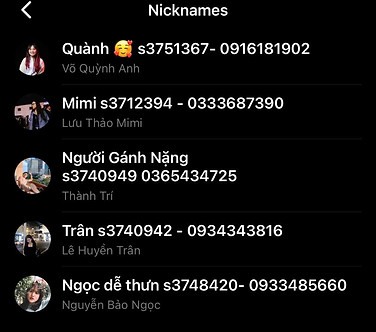
Figure 3: Our Messenger group to communicate online.
To make the offline team meeting happen, we updated our calendar on Outlook weekly and on Sunday, I will choose the appropriate meeting times that all of us can join and send the meetings invitations via Outlook.
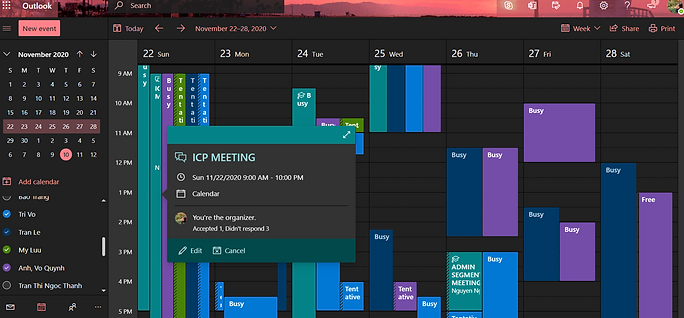
Figure 4: This is how I arrange our offline meetings through our team hectic schedules.
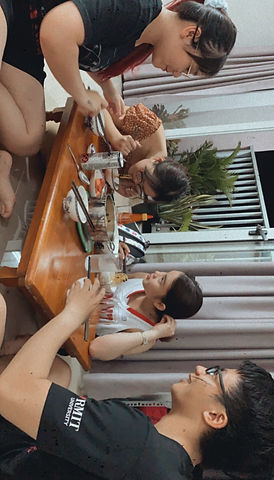
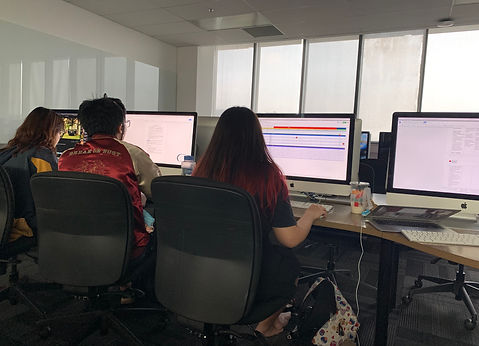
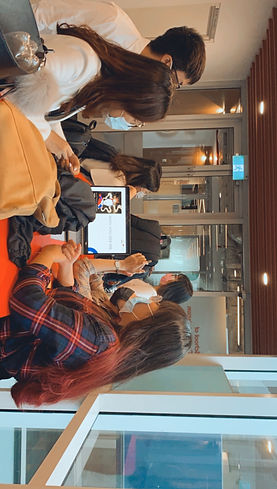
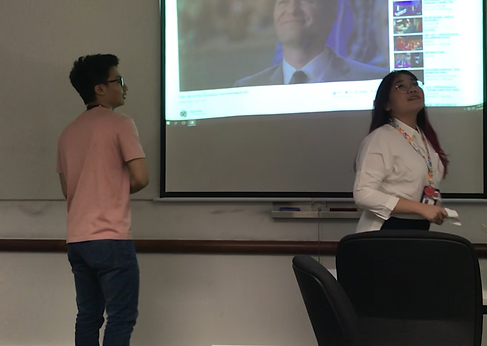
Figure 5: BEEZY team enjoys being busy together, from staying at school, going to a coffee shop for meetings to staying overnight to completing the tasks. We tend to collaborate well with each other and contribute ideas to enhance effectively teamwork.
I see that our team has experienced the issue in coordinating tasks. During a meeting in week 5, everyone discussed quite randomly and brainstormed the storyboard. However, after being stuck with the idea, they quickly switched to think for promotional ideas. As a result, both tasks were unfinished, and it is very time-consuming for everyone.
Coordination problems take away too much energy from the actual task work as we try to multitask them, resulting in an ineffective teamwork process. From this issue, I understand that our team needs a compelling direction in each meeting as Franz (2012) mentions that a team with a definite goal gets more success than a team that doesn't know where it goes.
To solve this problem, I have raised my opinion that the creative team should focus on building the storyboard for the creative idea. In contrast, the planner team will think of the promotional idea, explaining the drawbacks of being stuck at two tasks at the same time. Therefore, a task allocation is needed as Wang, Dang & Wu (2018) mentions that task allocation affects significantly maintaining the transparency in the operation process and producing high team performance.
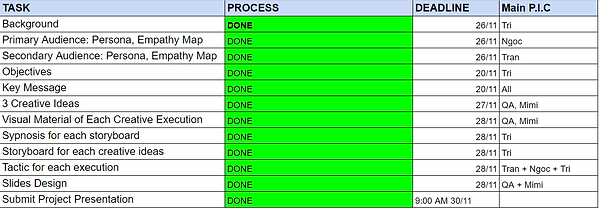
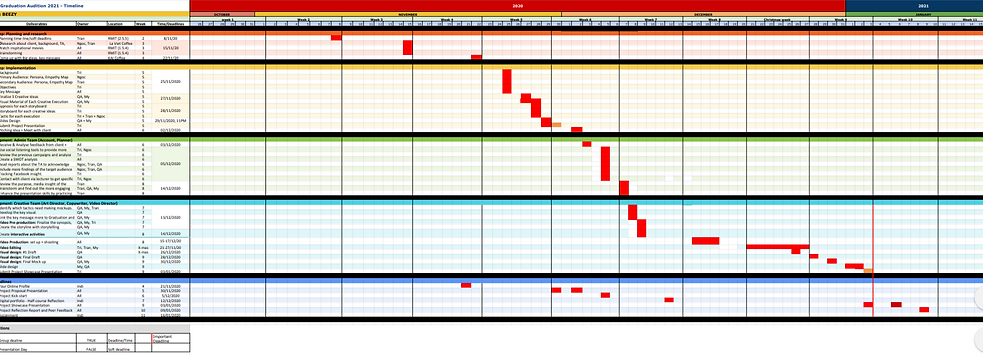
Figure 6: The task allocation of BEEZY team during the whole project starting from planning to execution phases. Our team assigned the tasks based on the best match of their skills, and willingness to comply with their roles.
We respect each other and let everyone have their voice resulting in efficiency and healthy teamwork (Heathfield 2020). As a result, having a task allocation will enable me to keep track of my task, contributing to my team effectiveness. The next day, each team reported their process and everyone would give feedback and suggestions. Fortunately, we have finished both the media plan and storyboard. To improve our team communication, I see that it is necessary to build a transparent working environment as Olivia (n.d.) suggests that being transparent encourages team members to contribute ideas and suggestions, enhancing creativity.
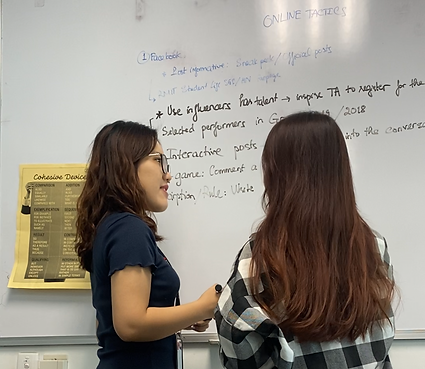
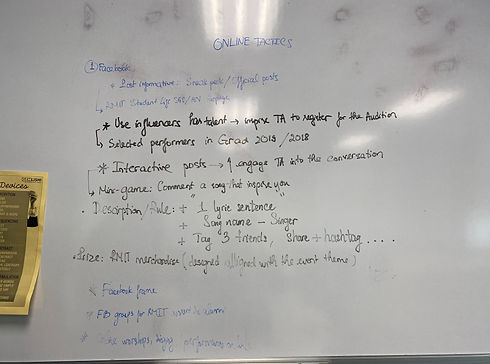.jpeg)
Figure 7: Me and Tran, the media planner discuss the online tactics for the campaign.
.png)
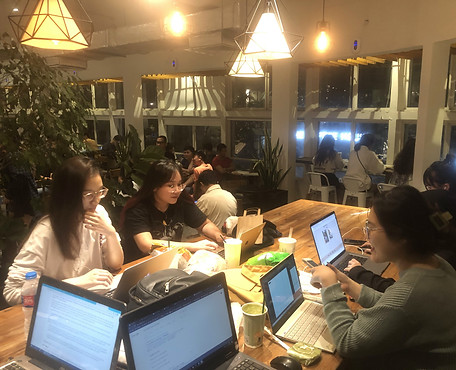
Figure 8: The creative team (Quynh Anh, My, Tri) during the brainstorming to come up with the visual materials for the campaign.
3. My weakness: Time management
There is one thing that I mentioned in my Online Profile is that by the end of the ICP course, I want to manage my time effectively. However, I regretted that I didn’t comply with my soft deadlines as in week 4, I focused more on the deadline for another course, neglecting the research task. As a result, my task was finished two days after the soft deadline.
Failing to set priorities for the tasks has affected me negatively, with experienced stress and staying up late to do them. This is quite time consuming, resulting in the outcome of not being as good as I expected. I now understand in a project, time management is crucial as timely delivery of projects helps to create trust and credibility among the clients (Donnelly 2019).
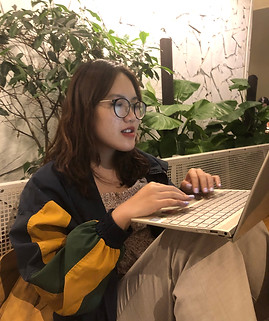
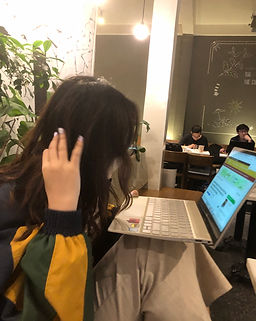.jpeg)
Figure 9: I tend to be distracted with social media, other tasks that affect productivity while doing my project task.
As I search for ways to improving my time management, these are some recommendations:
1
2
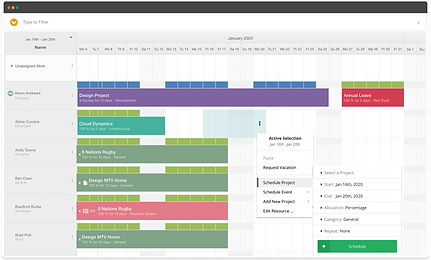
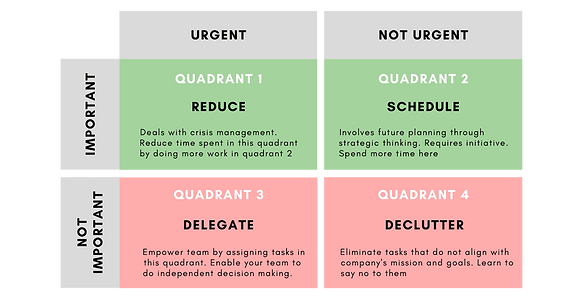.png)
Create a well-defined plan that must be reviewed weekly to update my tasks’ process (Forsyth 2019).
Prioritizing tasks by understanding the difference between urgent and important through using the Eisenhower matrix (Skills You Need n.d.)
3
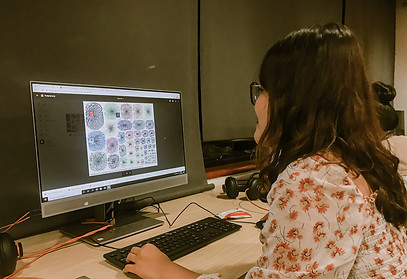
Focus on completing one task at a time and then move to another. This way gives me a rest and my brain is ready to take on a new task (Halubuda n.d.).
4
.png)
Find the tasks that I can delegate by contacting the backup team members who share the same task, using team charter and task allocation (Fouts 2017).
REALITY CHECK
This is what I actually do after realized my weakness in time management:
1
Making a to-do list, including what tasks need to be completed and deliverable dates.
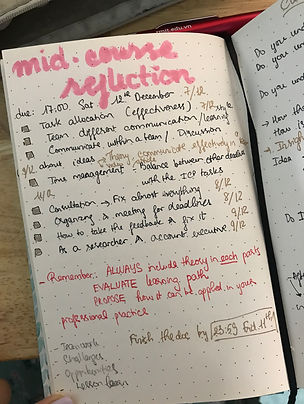.jpeg)
Figure 10: I am more strict to myself and set deadline for each part of the assignment.
2
Rethinking deadlines for my next task, particularly brainstorming for the online/ offline activities. I think about the workload of the task and how much time would I need to finish it. So, I set the soft deadline a few days before the actual deadline for my task so that I can complete early and have time for those 'pop-up' tasks.
3
In my team, there are some backups for each role. As Tran is a backup researcher, I asked for her support to research for the secondary audience and I would review her work and combined both of the audiences' insight to come up with the key insight.
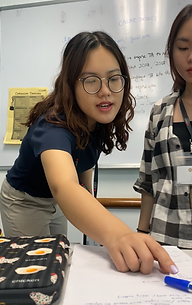.png)
.png)
Figure 11: My process working with Tran, secondary audience researcher.
4. Being a Monitor and having high expectations for others
Based on Belbin (2010), as a Monitor Evaluator, I am more on the judging side when selecting ideas whenever we have a discussion. Notably, I would ask for the pros and cons of each idea that my team members gave out and see whether the rationales are persuasive enough to execute.
‘This idea is nice; however, there might be some drawbacks…’ is the type of feedback I usually give to my team. However, my judging personality is quite strong, and honestly, sometimes, I don’t trust my team members’ work. I have high expectations and want every deliverable to be as detailed as possible. However, my teammates think that it is unnecessary to show our best work yet during the pre-deadline weeks. Therefore, when Ms Lena asked for the draft slides, our team was not fully prepared with all the required materials. During the Proposal process, it took me much time to revise the work in the research part as I was not satisfied with the overall performance of my team.
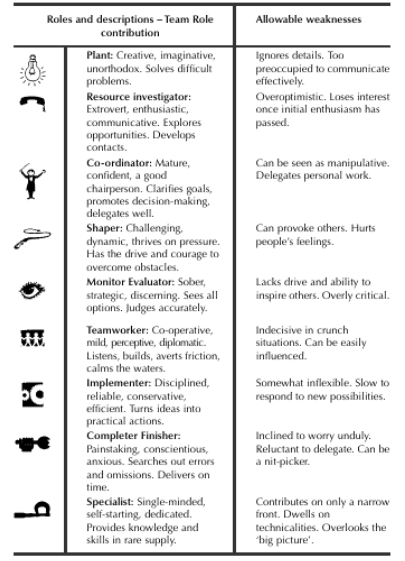
However, a selfish mindset won’t contribute positively in a productive team environment (Crowley 2018). I have accidentally set my high standards to others and care little for my teammates’ effort and outcomes. Consequently, understanding my Team Role is beneficial as it provides me with more critical thought processes and enables me to have different perspectives of ideas. Moreover, this experience has convinced me that I need to trust my teammates and understand that teamwork is not based on personal productivity, but more about the team performance.
Crowley (2018) suggests that to make a team become more collaborative, it is important to upgrade the personal productivity skills of everyone in the team. The next step, I will clarify my expectations to others, and expect everyone will be open to receive feedback and also share their expectations as building a culture of open communication can maintain the trust between team members, build alignment around goals (Hassel 2014). Creating a positive environment within the team is recommended so that all of us can express our opinions comfortably and maintain a sense of positivity (Turaga 2013). As a result, it can help me gain valuable insights and adjust my expectations towards others resulting in showing respect towards my teammates.
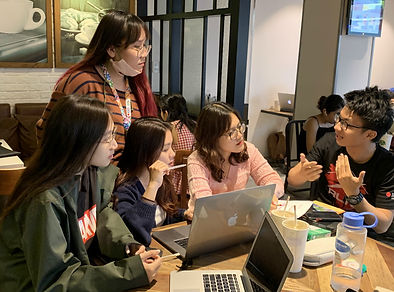
Figure 12: After hearing carefully to my team's ideas, I tend to praise and appreciate them first before giving any feedbacks and avoid reacting defensively when an idea is not good.
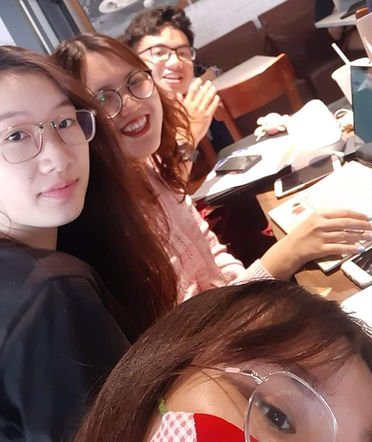.jpeg)
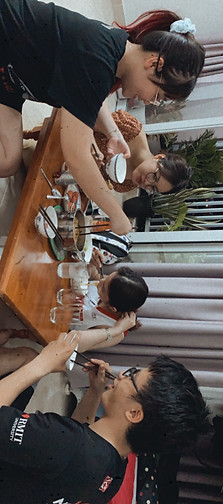
.jpeg)
Figure 13: We have set our common goal which is achieving an outstanding project to manage the client’s communication issue and surpass the course with a high grade. Moreover, our most important goal is having more memorable experiences in RMIT and tighten our team relationship after the project.
5. Reflection of my roles
during the project
I’m the account executive and researcher. So, I have to follow up with the brief and become the contact point between our team with the clients to ensure their needs are being met. As a result, I must note down the client’s feedback. Besides that, I also brief to the creative team who will produce the key visual for the campaign.
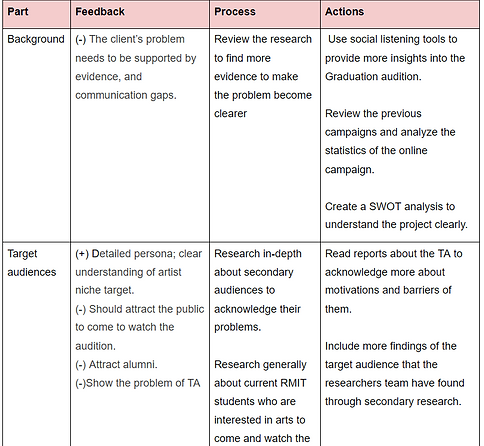
Figure 14: After receiving our client's feedback, I consolidate them into parts and define the pros and cons, as well as the suggestion of our client.
My biggest mistake when being an Account Executive is that I didn't read the brief carefully, resulting in research for the wrong audiences. According to Forbes (2020) article, an organization cannot have a tangible impact without a detailed understanding of the client's audience. Thanks to the consultation with Ms. Lena, I know I must put extra effort to research for the right target audiences. We had an urgent meeting on Monday, week 5, and revised all the research to keep the relevant ones and search for the current talents' behaviour. The word 'talent performance' has been in my mind ever since.
This issue has taken me a lot of time to conduct incorrect research. It directly impacts my team's process because understanding the target audience is the first step to gain insight, and creative members will rely on insight. Unfortunately, our workflow process was delayed due to my mistake, and the designers had to rush in having new creative concepts.
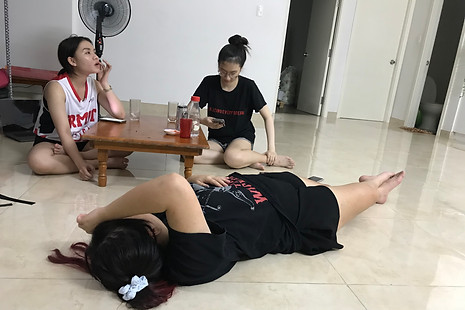
Figure 15: As the deadline approaches and we research for the wrong audiences. The whole team decided to stay overnight at my house to have completely new research and insights. Meanwhile, our creative director was devastated in coming up with a creative concept for the RMIT Talents.
Being a researcher enables me to conduct in-depth research analysis and I am gladly to apply my knowledge from the PR Research course. I had to dive deep into understanding the motivators and the barriers of the target audience through using social listening tools, scanning through the blogs or group discussions of the artists to find the keyword that can align with the artistry insights. I also require to create the Empathy Map alongside the Persona Map. Knowing more about the customer's desires allows me to provide them with quality content. I will be able to trigger and satisfy their basic needs and concerns. By doing the mapping, it is a time-efficient way for me to learn more about the customer and their core needs.
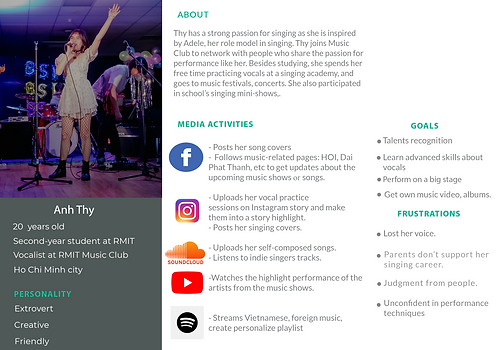
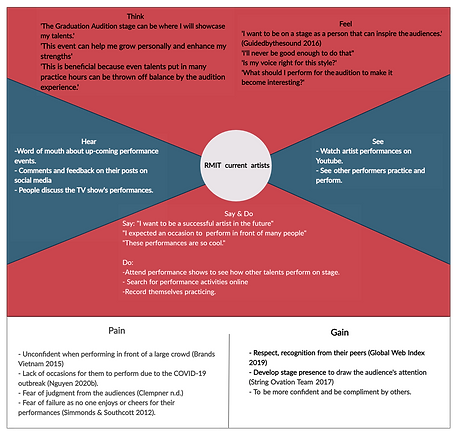
Figure 16: My research artifacts for the primary target audiences
Through self-evaluation, I have more knowledge in enhancing my strengths, know my weaknesses and learn how to make that weakness into an opportunity. To sum up, as we are moving to the Execution phase and our project is currently evolved, I have a deeper understanding about how to cooperate effectively in a team environment. Moreover, I am expecting myself to gradually improve my weaknesses until the end of ICP course.
REFERENCE
Belbin, R.M, Team Roles At Work, 2nd. Edn., Routledge, London, pp.24-30
Crowley, D 2018, Smart teams : communicate, congregate, collaborate : how to work better together, 1st edn., John Wiley & Sons, Australia, pp.26-37.
Donelly, G 2019, 'The Importance of Time Management in Your Projects', Workep, blog post, 6 May, viewed 10 December 2020, <https://blog.workep.com/the-importance-of-time-management-in-your-projects>.
Forbes 2020, '16 Ways Your Agency Can Learn More About New Clients’ Audiences', Forbes, 28 September, viewed 7 December 2020, <https://www.forbes.com/sites/forbesagencycouncil/2020/09/28/16-ways-your-agency-can-learn-more-about-new-clients-audiences/?sh=1f9832be6a12>.
Forsyth, P 2019, Successful Time Management : How to Be Organized, Productive and Get Things Done, 5th edn., Kogan Page Limited, UK, pp.17-20.
Fouts, M 2017, ‘Guidelines On How To Delegate Effectively’, Forbes, 26 May, viewed 10 December 2020, <https://www.forbes.com/sites/forbescoachescouncil/2017/05/26/guidelines-on-how-to-delegate-effectively/?sh=5ee531b083ae >.
Franz, T.M 2012, Group dynamics and team interventions: understanding and improving team performance, John Wiley & Sons, UK, pp.6-10
Halabuda, P n.d., ‘8 Time Management Strategies for More Productive Work’, Team Deck, blog post, viewed 10 December 2020, <https://teamdeck.io/project-management/time-management-strategies/ >.
Heathfield, S.M 2020, 'How to Demonstrate Respect in the Workplace', The Balance Careers, 10 June, viewed 7 December 2020, <https://www.thebalancecareers.com/how-to-demonstrate-respect-in-the-workplace-1919376#:~:text=Respect%20is%20a%20key%20requirement,important%20to%20their%20company's%20success.>.
Marks, M, Mathieu, J, & Zaccaro, S 2001, 'A Temporally Based Framework and Taxonomy of Team Processes', The Academy of Management Review, vol. 26, no.3, pp.356–376.
Oliva n.d, ‘6 Simple Tips for Effective Team Management’, The Creativity and Productivity Focus, blog post, viewed 10 December 2020, <https://www.meistertask.com/blog/6-simple-tips-effective-team-management/>.
Skills You Need n.d, ‘Time Management Skills’, Skills You Need, blog post, viewed 10 December 2020, <https://www.skillsyouneed.com/ps/time-management.html >.
Turaga, R 2013, 'Building Trust in Teams: A Leader’s Role', The IUP Journal of Soft Skills, Vol. 7, No.2, pp.14-30
Wang, S, Dang, Y & Wu, J 2018, ‘How Task Allocation Strategy Affects Team Performance: A Computational Experiment’, Journal of Systems Science and Systems Engineering, vol. 27,pp. 656–676.